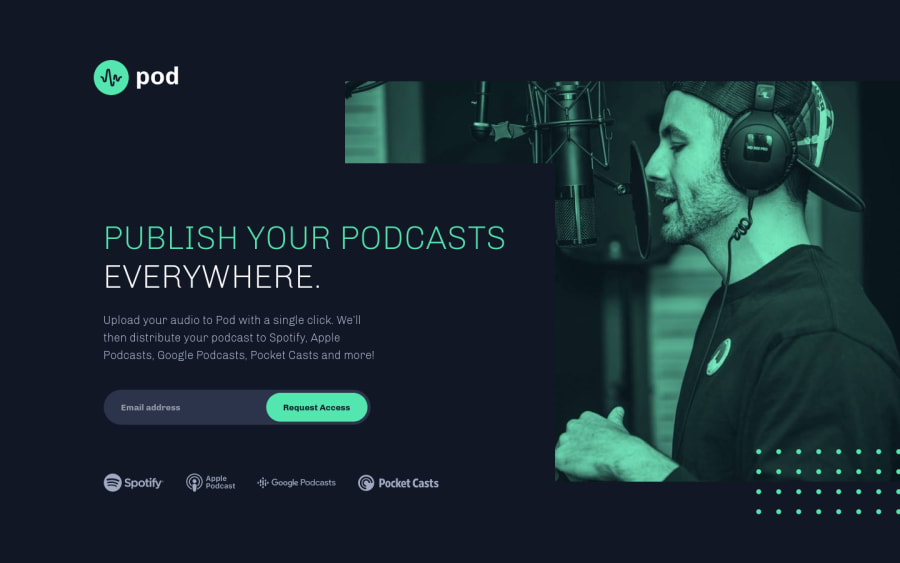
Pod Request Access Landing Page - Svelte, SCSS
Design comparison
Solution retrospective
There's nothing like struggling with a challenge labeled "NEWBIE" to really knock you down a few pegs. 😅 Front-end design is one of those things I've always assumed I know how to do because it comes easier than back-end work, but this first challenge showed me all the blindspots I had.
1.) Mobile-first responsive design. I spent longer than I should've deciding on breakpoints and then constantly had to adjust them. The spacing transitioning from a desktop to an iPad was especially tricky. If anyone has tips on how to choose/maintain a uniform set of breakpoints, I'd love to hear them!
2.) Svelte. I took this chance to learn a new technology: Svelte. And I loved it! It made it easy to separate and keep track of the different components, I didn't have to worry about BEM naming conventions, and the code looks cleaner IMO. However, I wasn't able to figure out how to get the validation on the form working for when a user tries to submit an empty email address field using Svelte logic. (So you'll notice that the error is the same even though it should change.)
3.) Form validation. This was an unexpected pain point towards the end. If anyone knows how to turn off the automatic form validation error messages that come up in chrome (and overlap the CSS I wrote), PLEASE let me know. I couldn't figure out how to make only one error message come up.
4.) Hiding form labels. To fit the design, I had to hide the form label for the email address input field while also making sure screen readers could see it. I found my solution on StackOverflow, but how do most of you do it?
Thank you!
Community feedback
Please log in to post a comment
Log in with GitHubJoin our Discord community
Join thousands of Frontend Mentor community members taking the challenges, sharing resources, helping each other, and chatting about all things front-end!
Join our Discord
